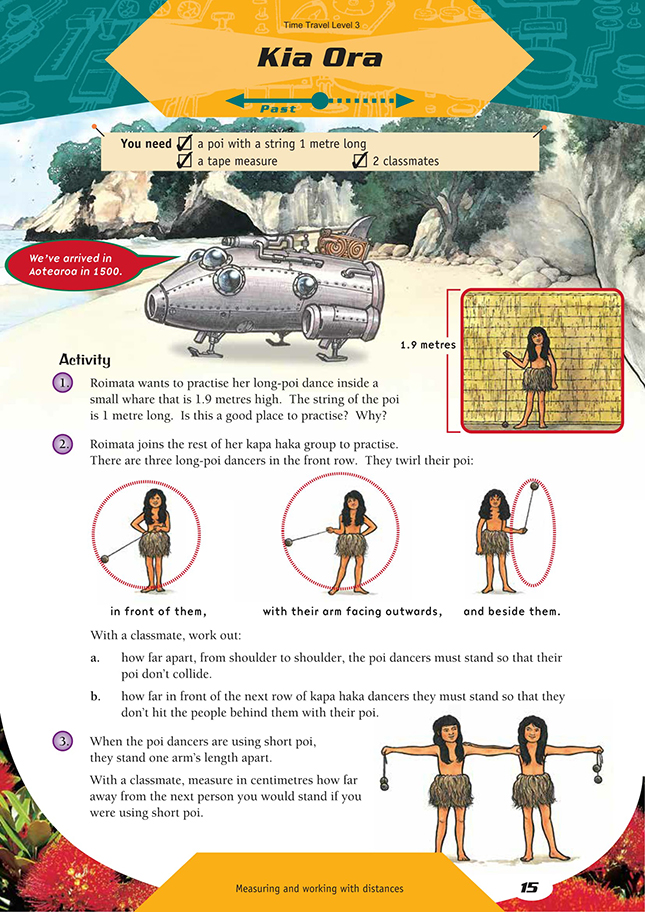This is a level 3 measurement activity from the Figure It Out theme series.
A PDF of the student activity is included.
Click on the image to enlarge it. Click again to close. Download PDF (389 KB)
calculate distances between objects
A poi with a string 1 metre long
FIO, Level 3, Theme: Time Travel, Kia Ora, page 15
A tape measure
2 classmates
In this activity, the students measure and estimate the lengths of a variety of things, for example, poi strings and arms. The activity also uses their understanding of circle geometry and how the length of the poi string relates to the size of the circle. The students may use a range of problem-solving strategies, for example, acting out the problem or drawing a diagram, in order to see the relationship between the length of the string and the diameter of the circle.
The most effective method to help students visualise question 2 is to have them working in small groups to observe the movement of the poi as one person twirls it. The poi dancer could then freeze with their arm in the position they would be in if moving the poi. Another student can extend the poi to the appropriate position, and a third student measures from the shoulder of the dancer.
Note that for question 3, the students don’t need to know the length of the string of a short poi. Standing an arm’s length apart allows for the length of the short poi string.
As an extension, the students could watch a kapa haka performance and afterwards talk to the performers about how they space themselves out. For example, the students could ask the performers how they space themselves when they use rakau and taiaha. The students could then draw a floor plan to show the positions of the various performers.
Answers to Activity
1. It is not a good place to practise because the whare is not tall enough for Roimata to swing the poi in a complete circle. The whare would have to be more than 2 m high for Roimata to swing the poi in a complete circle.
2. a. Answers will vary. The dancers will have to stand approximately 2.5 m apart:
2 x (25 cm for arm length and 1 m for the poi string).
b. Answers will vary. If there is just one row of poi dancers in the kapa haka group,
they will have to stand approximately 1.5 m in front of the next row: 1 m for the
poi string and 50 cm to allow for their arm moving backwards. If there is more than
one row of poi dancers, they will have to stand approximately 3 m in front of the
next row. They need to allow for their arm and poi length as well as the arm and poi
length of the person behind them.
3. Practical activity
